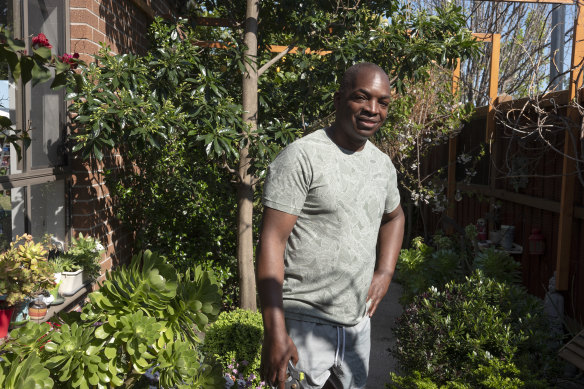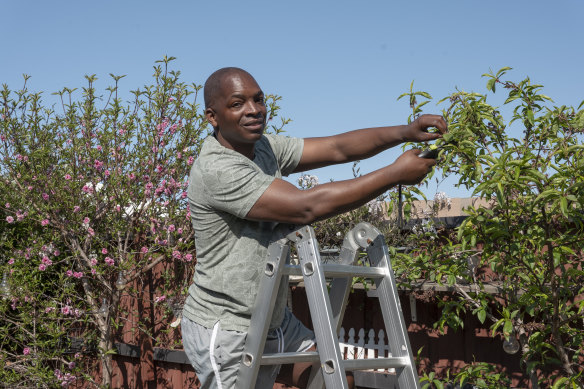
Australian gardeners who have dealt with two wet springs and the fungal infections that came with them are about to go through a third drenched season in a row.
Experts are predicting another La Nina year will soak Australian backyards, but there are ways to keep gardens looking good and growing well even with the unseasonable wet weather.
Karl Campbell lost his tomatoes last year so is planning his gardening around another wet spring.Credit:Luis Ascui
Duncan Cocking, the director of Leaf, Root & Fruit, says spring is an ideal time for home gardening because the soil starts to warm up and there is plenty of residual moisture in the soil from winter rainfall.
He says a wet spring is not necessarily bad for gardening but it is important people adapt their gardening style slightly.
“A wet spring creates a lot of humidity, leading to severe pest outbreaks. Things like whitefly or aphids are more likely to be apparent in spring,” said Cocking.
“The high humidity is likely to lead to fungal issues and diseases, so things like curly leaf in peaches and nectarines will be very apparent in gardens at the moment.”
Tim Entwisle, director of Royal Botanic Gardens Victoria, says people can plant the same seeds in a wetter-than-usual spring, but they need to be more careful about how they plant those seeds.
“You need to space your plants out and not make them too crowded, which will help avoid a fungal infection. Leave as much space between them as you can,” he said.
Celia Connor, a lecturer in environment and agriculture at Charles Sturt University, says increased humidity and rainfall contribute to a population explosion of different diseases, particularly fungal diseases.
“We would expect to see a different suite of plant diseases, whether bacterial, fungal or insect damage. A moist warm environment is ideal for fungal to establish on a plant,” she said.
“If planted close together, they create a humid microclimate. That’s the perfect space for fungal to proliferate.”
Connor also suggests putting the sprinklers on in the morning and letting the plants dry overnight.
“If you’ve got a watering system, put it on in the morning. So the plant foliage doesn’t retain water overnight because the cool and dark period with water sitting on the leaves increases fungal infestation,” she said.
“It’s also important to avoid the leaves, like on tomatoes, from touching the soil as many fungal diseases or bacterial diseases are soil-borne. Pull off any leaves touching the soil.”
Last spring, when a second La Nina event was declared, 50-year-old freelance chef Karl Campbell had a season with no tomatoes because of a fungal problem.
“I had to let the tomatoes go to compost. It was a bad year for tomatoes. All the neighbours said the same thing – it wasn’t just me,” he said.
Campbell pruning his trees in his backyard garden.Credit:Luis Ascui
Campbell started his backyard garden from scratch seven years ago but didn’t know much about gardening then. Today his garden is abundant with all kinds of veggies and fruits, which he also uses in his cooking.
“It’s very convenient, especially with the rising cost of living. When there was a lettuce shortage I had it all here. I didn’t have to worry about it,” Campbell said.
For Campbell, growing his food is not just a hobby but also his way to be more sustainable.
“Being a chef, I work with all kinds of herbs and veggies, but I don’t think they’re organic. They’re just mass-produced in a warehouse. But when you grow your own, you can taste the difference,” he said.
“I’ve got a family, and it’s good for them too. I know what they’re eating and where their food is coming from. I worry less.”
Make the most of your health, relationships, fitness and nutrition with our Live Well newsletter. Get it in your inbox every Monday.
Most Viewed in Lifestyle
From our partners
Source: Read Full Article

